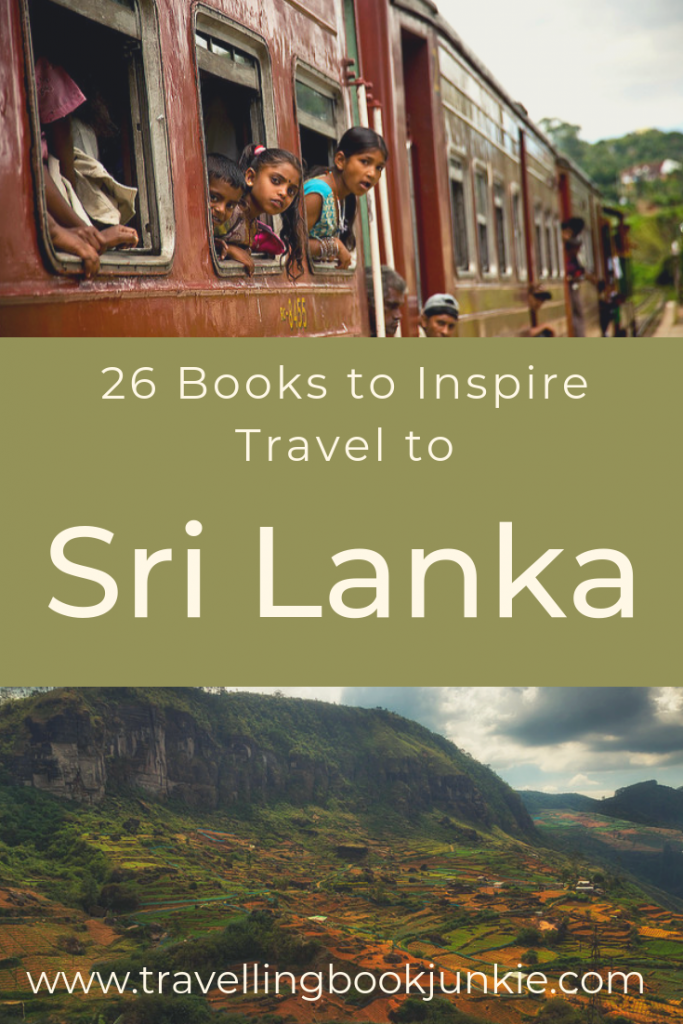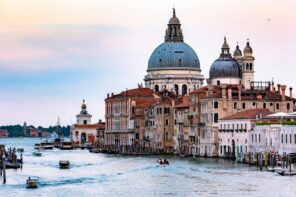Whether you are the adventurous type, looking to explore all Sri Lanka has to offer – from its many tea plantations, scenic train journeys and its numerous temples – or prefer to simply relax on one of the Island’s beautiful beaches, finding out a little bit about the country’s history before visiting is something that many people find extremely worthwhile.
Over time, Sri Lanka, once known as Ceylon, has moved away from British rule, has survived a civil war and has learned to thrive again after being hit by one of the world’s most deadly natural disasters: it is a country bursting at the seams with stories to tell.
From historical novels to travelogues and contemporary literature there is plenty of reading material available, allowing everyone the opportunity to gain insights into the teardrop island before they even leave the comfort of their own armchair.
Whether you prefer fiction or non-fictional reads this epic list will give everyone an insight into a stunning country fortunate enough to be surrounded by the Indian Ocean.
Books on Sri Lanka Everyone Should Read
#1 The Tea planters Wife (Dinah Jefferies)
Nineteen-year-old Gwendolyn Hooper is newly married to a rich and charming widower, eager to join him on his tea plantation, determined to be the perfect wife and mother. But life in Ceylon is not what Gwen expected.
The plantation workers are resentful, the neighbours treacherous, and there are clues to the past, a dusty trunk of dresses, an overgrown gravestone on the grounds, that her husband refuses to discuss.
Just as Gwen finds her feet, disaster strikes. She faces a terrible choice, hiding the truth from almost everyone, but a secret this big can’t stay buried forever.
#2 Island of a Thousand Mirrors (Nayomi Munaweera)
Before violence tore apart the tapestry of Sri Lanka and turned its pristine beaches red, there were two families. Yasodhara tells the story of her own Sinhala family, rich in love, with everything they could ask for. As a child in idyllic Colombo, Yasodhara and her siblings’ lives are shaped by social hierarchies, their parents’ ambitions, teenage love and, subtly, the differences between the Tamil and Sinhala people, but this peace is shattered by the tragedies of war. Yasodhara’s family escapes to Los Angeles. But Yasodhara’s life has already become intertwined with a young Tamil girl’s.
Saraswathie is living in the active war zone of Sri Lanka and hopes to become a teacher. But her dreams for the future are abruptly stamped out when she is arrested by a group of Sinhala soldiers and pulled into the very heart of the conflict that she has tried so hard to avoid, a conflict that, eventually, will connect her and Yasodhara in unexpected ways.

 #3 Elephant Complex: Travels in Sri Lanka (John Gimlette)
#3 Elephant Complex: Travels in Sri Lanka (John Gimlette)
Gimlette’s travels reveal the country as never before. Beginning in the exuberant capital, Colombo, he ventures out in all directions: to the dry zones where the island’s 5,800 wild elephants congregate around ancient reservoirs; through cinnamon country with its Portuguese forts; to the tsunami-ravaged southeast coast; then up into the great green highlands and Kandy, the country’s eccentric, aristocratic Shangri-la.
This is a story of friendship and remarkable encounters. In the course of his journey, Gimlette meets farmers, war heroes, ancient tribesmen, world-class cricketers, terrorists, a former president, old planters and survivors of great massacres.
 #4 The Teardrop Island: Following Victorian Footsteps Across Sri Lanka (Cherry Briggs)
#4 The Teardrop Island: Following Victorian Footsteps Across Sri Lanka (Cherry Briggs)
Cherry Briggs discovers the writings of an eccentric Victorian writer and explorer, James Emmerson Tennant, and decides to follow his footsteps before she leaves her teaching job in Sri Lanka. The unmarried and childless Briggs is the object of mirth and pity of the Sinhalese as she journeys around the Teardrop Island on public transport. With the civil war recently ended and the effects of the devastating tsunami as ever-present context Briggs entertains and educates. Her hapless inability to select decent guides or drivers results in her taking us vicariously to places we would never reach otherwise.
 #5 The Village in the Jungle (Leonard Woolf)
#5 The Village in the Jungle (Leonard Woolf)
This novel, set in Ceylon, follows the lives of a handful of villagers hacking out a fragile existence in a jungle where indiscriminate growth, indifferent fate, and malevolent neighbours constantly threaten to overwhelm them.
 #6 Growing: Seven Years in Ceylon (Leonard Woolf)
#6 Growing: Seven Years in Ceylon (Leonard Woolf)
Growing is the autobiography of a young man sent straight from university to help govern the British Empire.
Rarely has an empire had such an intelligent, dutiful, hard-working and incorruptible civil servant. Woolf was determined to do what was good but discovered for himself that colonial rule was fated to do what was wrong. Growing is a deeply affectionate portrait of the mystery, magic and savage beauty of Ceylon at the beginning of the twentieth century.

 #7 This Divided Island: Stories from the Sri Lankan War (Samanth Subramanian)
#7 This Divided Island: Stories from the Sri Lankan War (Samanth Subramanian)
In the summer of 2009, the leader of the dreaded Tamil Tiger guerrillas was killed, bringing to a bloody end the stubborn and complicated civil war in Sri Lanka. For nearly thirty years, the war’s fingers had reached everywhere: into the bustle of Colombo, the Buddhist monasteries scattered across the island, the soft hills of central Sri Lanka, to the curves of the eastern coast near Batticaloa and Trincomalee and the stark, hot north. With its genius for brutality, the war left few places and fewer people, untouched.
What happens to the texture of life in a country that endures such bitter conflict? What happens to the country’s soul?
Samanth Subramanian gives us an extraordinary account of the Sri Lankan war and the lives it changed. Taking us to the ghosts of summers past and to other battles from other times, he draws out the story of Sri Lanka today – an exhausted, disturbed society, still hot from the embers of the war.
 #8 The Cage: The fight for Sri Lanka & the Last Days of the Tamil Tigers (Gordon Weiss)
#8 The Cage: The fight for Sri Lanka & the Last Days of the Tamil Tigers (Gordon Weiss)
In the final days of the thirty-year Sri Lankan civil war, perhaps tens of thousands of civilians were killed as government forces hemmed in the last remaining Tamil Tiger rebels on a tiny sand-spit, dubbed “The Cage.” Gordon Weiss, a journalist on the scene as the UN spokesman in Sri Lanka, pulls back the curtain of government misinformation to tell the full story for the first time.
Tracing the role of foreign influence as it converged with a history of radical Buddhism and ethnic conflict, this is a harrowing portrait of the root causes and catastrophic consequences of a revolutionary uprising caught in the crossfire of international power jockeying.
As Weiss relates the tale of an island paradise torn apart by war, he raises critical questions: Were war crimes committed? Was this the Obama administration’s first “human rights failure” (as suggested by “Time” magazine)? Does China’s central role in the Sri Lankan government’s victory sound a warning for democratic progress?
 #9 Still Counting the Dead: Survivors of Sri Lanka’s Hidden War (Frances Harrison)
#9 Still Counting the Dead: Survivors of Sri Lanka’s Hidden War (Frances Harrison)
The tropical island of Sri Lanka is a paradise for tourists, but in 2009 it became a hell for its Tamil minority, as decades of civil war between the Tamil Tiger guerrillas and the government reached its bloody climax. Caught in the crossfire were hundreds of thousands of schoolchildren, doctors, farmers, fishermen, nuns, and other civilians.
The government ensured, through a strict media blackout, that the world was unaware of their suffering. Now, a UN inquiry has called for war-crimes investigations. Those crimes are recounted here to the wider world for the first time in sobering, shattering detail.

 #10 Anil’s Ghost (Michael Ondaatje)
#10 Anil’s Ghost (Michael Ondaatje)
This book transports us to Sri Lanka, a country steeped in centuries of tradition, now forced into the late twentieth century by the ravages of civil war. Into this maelstrom steps Anil Tissera, a young woman born in Sri Lanka, educated in England and America, who returns to her homeland as a forensic anthropologist sent by an international human rights group to discover the source of the organized campaigns of murder engulfing the island.
What follows is a story about love, about family, about identity, about the unknown enemy, about the quest to unlock the hidden past – a story propelled by a riveting mystery.
 #11 The Road from the Elephant Pass (Nihal de Silva)
#11 The Road from the Elephant Pass (Nihal de Silva)
An army officer’s routine assignment to pick up a woman informant near Jaffna turns into a nightmare when the Tigers launch a massive attack on the peninsula and the camp at Elephant Pass. The two adversaries are forced to escape together through the rebel-held Wanni and later, cross the abandoned Wilpattu National Park on foot.
Bitter enemies at the start of their journey, Captain Wasantha and the activist Kamala face innumerable threats from wild animals and a gang of deserters who make determined and violent efforts to capture the woman. The constant external danger, and their enforced dependence on each other, gradually erodes their enmity and distrust.
But a shocking revelation confronts Wasantha when he finally reaches Colombo. He is now compelled to choose between his friend and his country.
 #12 Mosquito (Roma Tearne)
#12 Mosquito (Roma Tearne)
When Theo Samarajeeva returns to his native Sri Lanka after his wife’s death, he hopes to escape his gnawing loss amid the lush landscape of his increasingly war-torn country. But as he sinks into life in this beautiful, tortured land, he also finds himself slipping into friendship with an artistic young girl, Nulani, whose family is caught up in the growing turmoil. Soon friendship blossoms into love. Under the threat of civil war, their affair offers a glimmer of hope to a country on the brink of destruction.
But all too soon, the violence which has cast an ominous shadow over their love story explodes, tearing them apart. Betrayed, imprisoned and tortured, Theo is gradually stripped of everything he once held dear – his writing, his humanity and, eventually, his love.
Broken by the belief her lover is dead, Nulani flees Sri Lanka to a cold and lonely life of exile. As the years pass and the country descends into a morass of violence and hatred, the tragedy of Theo and Nulani’s failed love spreads like a poison among friends sickened by the face of civil war, and the lovers must struggle to recover some of what they have lost and to resurrect, from the wreckage of their lives, a fragile belief in the possibility of redemption.
 #13 Reef (Romesh Gunesekera)
#13 Reef (Romesh Gunesekera)
A single lighted match banishes Triton from his father’s home to the employ of Mister Salgado, a marine biologist obsessed by swamps, sea movements and a Sri Lankan island’s disappearing reef. Stranded in London years later, Triton plumbs the depths of his childhood memories – a period of brewing political, ethical and religious turmoil – and brings us to understand how he has navigated this brave new world, which once lost will haunt him forever.
 #14 The Flower Boy (Karen Roberts)
#14 The Flower Boy (Karen Roberts)
In the colonial society of 1930s Ceylon, the separation between servant and master is clearly drawn. Young Chandi, however, knows that the baby born to his mother’s mistress will be his friend. And, indeed, their friendship blossoms in the lush gardens of the tea plantation on which they live. Many, English and Ceylonese, are troubled by the friendship, but the English planter is charmed by the children’s bond, and ultimately by Chandi’s mother, Premawathi.
This is a tragically romantic story of people from two cultures, one ruling the other, and the human passions that defy and nearly overcome social taboos.
 #15 The Hamilton Case (Michelle de Krester)
#15 The Hamilton Case (Michelle de Krester)
The place is Ceylon, the time the 1930s. Set amid tea plantations and corruption. This is a world teetering on the edge of chaos.
Sam Obeysekere is a Ceylonese lawyer, but his family, which once had wealth and influence, starts to crack open as political change comes to the island, and Sam’s glamorous father dies leaving gambling debts.
At the same time, a murder scandal shakes the upper echelons of island society and Sam’s involvement in it makes a name for him but it also sets his life on a course of disappointment.
 #16 Not Quite Paradise (Adele Barker)
#16 Not Quite Paradise (Adele Barker)
Adele Barker and her son, Noah, settled into the central highlands of Sri Lanka for an eighteen-month sojourn, immersing themselves in the customs, cultures, and landscapes of the island – its elephants, birds, and monkeys; its hot curries and sweet mangoes; the cacophony of its markets; the resonant evening chants from its temples.
When having returned home to Tucson, Barker awakes on December 26, 2004, to see televised images of the island’s southern shore disappearing into the ocean and she decides she must go back.
Travelling from the southernmost coasts to the farthest outposts of the Tamil north, she witnesses the ravages of the tsunami that killed forty-eight thousand Sri Lankans in the space of twenty minutes, and reports from the ground on the triumphs and failures of relief efforts.
 #17 Tamil Tigress: My Story as a Child Soldier in Sri Lanka’s Bloody Civil War (Niromi de Soyza)
#17 Tamil Tigress: My Story as a Child Soldier in Sri Lanka’s Bloody Civil War (Niromi de Soyza)
Two days before Christmas in 1987, at the age of 17, Niromi de Soyza found herself in an ambush as part of a small platoon of militant Tamil Tigers fighting government forces in the bloody civil war that was to engulf Sri Lanka for decades.
With her lifelong friend, Ajanthi, also aged 17, the teenagers become part of the Tamil Tigers’ first female contingent. Equipped with little more than a rifle and a cyanide capsule, Niromi’s group managed to survive on their wits in the jungle, facing not only the perils of war but starvation, illness and growing internal tensions among the militant Tigers.
 #18 Monsoons and Potholes (Manuka Wijesinghe)
#18 Monsoons and Potholes (Manuka Wijesinghe)
Monsoons and Potholes is a mad, bad, irreverent account of growing up in Sri Lanka. This is a story of the trials and tribulations of a heroine in tandem with the country’s slippery progress on the road to nowhere.
 #19 Tea Time with Terrorists: A Motorcycle Journey into the Heart of Sri Lanka’s Civil War (Mark Stephens Meadows)
#19 Tea Time with Terrorists: A Motorcycle Journey into the Heart of Sri Lanka’s Civil War (Mark Stephens Meadows)
Armed with a map, a motorcycle, an infectious sense of humour, and a dim understanding of Sri Lanka’s war, adventurer Mark Stephen Meadows arrives in the country intending to have, as it were, afternoon tea with terrorists. Figuring that the first step to solving a problem is to understand it, he journeys north into the war zone, interviewing terrorists, generals, and heroin dealers along the way.
He discovers an island of beauty and abundance ground down by three decades of war. As he travels north through Colombo, Kandy, and the damaged city of Jaffna, Meadows gives his riveting take on the war. Known for child conscription and drawn-out torture methods, he explains, the Tamil Tigers also invented suicide bombing and were the first to lace together terrorists and financiers into international networks of a militant uprising.
In Sri Lanka, Meadows discovers a deep view into an ancient culture. Along the way, he learns to trap an elephant, weave rope from coconut husks, and cast out devils, and he actually has tea with a few terrorists.
 #20 Noontide Toll (Romesh Gunesekera)
#20 Noontide Toll (Romesh Gunesekera)
Vasantha is a van driver for hire, ferrying aid workers, returning exiles, and tentative entrepreneurs across the battle-scarred landscapes of Sri Lanka. The civil war is finally over, but the traumas of the past are still haunting. Behind the facade of peace, we are made to remember the war: mysterious hoteliers conceal scars under their collars; genial old soldiers are secretly identified as perpetrators of brutal crimes; young Sinhalese men pine after Tamil girls whose brothers died by their hands.
Vasantha keeps his own counsel, lingering on the periphery of his passengers’ stories, but as time goes on he reveals a little of his own story too.
 #21 A Year in Green Tea and Tuk Tuks (Rory Spowers)
#21 A Year in Green Tea and Tuk Tuks (Rory Spowers)
BBC journalist and environmentalist Rory Spowers wanted to finally live his dream and abandon life in London for a more ecologically sustainable lifestyle. Moving with his wife and two toddler sons to a 60–acre abandoned tea estate in Sri Lanka, Rory sets out to create a model organic farm there and earn his livelihood from the land.
The fascinating story begins with the tsunami and Rory’s sudden involvement with the relief efforts and charts the course of his adventures over 12 months culminating in the launch of his new business, making a living by selling the produce he grows. It chronicles the highs and lows of this radical change and reveals what it takes to live a sustainable life.
 #22 Tsunami Kids (The Gandy Brothers)
#22 Tsunami Kids (The Gandy Brothers)
On Boxing Day in 2004, Rob, Paul, Mattie, and Rosie Forkan tragically lost their parents in the Boxing Day Tsunami that devastated Sri Lanka. Aged from 8 to 17, they subsequently faced a harrowing and solitary 200km trek across the decimated country to get home to safety.
The bravery, ingenuity, and resilience they displayed as a result of their unusual upbringing. Taken out of school at a young age, they received an unconventional and global education, learning independence and resourcefulness while carrying out voluntary work for charities in India alongside their parents.
In the decade since the tsunami, Rob and Paul have created a multinational brand, Gandys, which started in the front room of their rented flat and has been endorsed by entrepreneurs including Richard Branson. They have gone on to set up Orphans for Orphans, a charitable organization that supports children deprived of education, nutrition, and medication.
 #23 Tsunami 2004: Unawatuna, Sri Lanka (Tracey Lee)
#23 Tsunami 2004: Unawatuna, Sri Lanka (Tracey Lee)
Boxing Day, 2004, in Sri Lanka was a day when many people lost their lives in a ‘freak act of nature’. Asia experienced the second largest earthquake on record in the Indian Ocean, off the west coast of Sumatra, releasing massive tsunamis that brought death and devastation throughout the region. The mega-thrust earthquake created a geological catastrophe and approximately six hundred miles of fault lines ruptured in the Asian sea.
Early that morning, everyone was blissfully unaware of the horrors that lay ahead. They were going about their daily chores, eating their breakfast, taking an early dip in the crystal water or lying on the beach catching the early morning sun rays, happy and relaxed. What began as a normal day for hundreds of thousands of people turned out to be one of the most catastrophic days in history.
In Sri Lanka alone, somewhere between thirty-eight thousand and thirty-nine thousand people became victims of the tsunami. It is estimated that at least three hundred thousand people died in twelve different countries throughout Asia and Africa on that day – the exact figure may never be known. The countries affected were Sri Lanka, Indonesia, India, Thailand, the Maldives, Seychelles, Bangladesh, Burma, Kenya, Malaysia, Somalia, and Tanzania.
Tracey Lee was on holiday with her partner and family when the disaster struck. This is her story of survival against the odds.
 #24 Cinnamon Gardens (Shyam Selvadurai)
#24 Cinnamon Gardens (Shyam Selvadurai)
Set in repressive and complex 1920s Ceylon, the Cinnamon Gardens is a residential enclave of wealthy Ceylonese. Among them is Annalukshmi, an independent and high-spirited young teacher intent on thwarting her parents’ plans to arrange her marriage. In a parallel narrative, her uncle, Balendran Navaratnam, respectably married but secretly homosexual, has his life disrupted by the arrival in Ceylon of Richard, a lover from long ago.
This evocative novel tells the story of two people who must determine if it is possible to pursue personal happiness without compromising the happiness of others.
#25 The Beach at Galle Road: Stories from Sri Lanka (Joanna Luloff)
When rumours of civil war between the ruling Sinhalese and the Tamils in the northern sector of Sri Lanka reach those who live in the south, somehow it seems not to be happening in their own country. At least not until Janaki’s sister, Lakshmi, now a refugee whose husband, a Tamil, has disappeared, comes back to live with her family.
When Sam, an American Peace Corps worker who boards with Janaki’s family, falls in love with one of his students, a young girl from the north, he too becomes acutely aware of the dangers that exist for anyone who gets drawn into the conflict, however marginally.
Skillfully weaving together the stories of these and other intersecting lives, The Beach at Galle Road explores themes of memory and identity amid the consequences of the Sri Lankan civil war.
 #26 The Seasons of Trouble: Life Amid the Ruins of Sri Lanka’s Civil War (Rohini Mohan)
#26 The Seasons of Trouble: Life Amid the Ruins of Sri Lanka’s Civil War (Rohini Mohan)
For three decades, Sri Lanka’s civil war tore communities apart. In 2009, the Sri Lankan army finally defeated the separatist Tamil Tigers guerrillas in a fierce battle that swept up about 300,000 civilians and killed more than 40,000. More than a million had been displaced by the conflict, and the resilient among them still dared to hope. But the next five years changed everything.
Rohini Mohan’s searing account of three lives caught up in the devastation looks beyond the heroism of wartime survival to reveal the creeping violence of the everyday.
City-bred Sarva is dragged off the streets leaving his middle-aged mother, Indra, searching for him through the labyrinthine Sri Lankan bureaucracy. Meanwhile, Mugil, a former child soldier, deserts the Tigers in the thick of war to protect her family. Having survived, they struggle to live as the Sri Lankan state continues to attack minority Tamils and Muslims, frittering away the era of peace.
Sarva flees the country, losing his way and almost his life in a bid for asylum. Mugil stays, breaking out of the refugee camp to rebuild her family and ordinary life in the village she left as a girl. But in her tumultuous world, desires, plans, and people can be snatched away in a moment.
With so many to choose from which book will you read first? How many have you already read? Have you read a book that is not on the list but should be?
Looking for other inspiring book lists? We also compiled a list of fantastic books set in Australia as well as a list of intriguing books about Canada.
Did you enjoy this article? Then PIN it for later…

































Hi I am from Sri Lanka.
I love your list! But can I recommend something for children based on the Tuk Tuk culture?
Roo The Little Red Tuk Tuk.
Hi Nadishka, thank you very much for this suggestion!
Twenty-six? Man, most countries are lucky if I read one or two books about them before arriving…
A lot of tragedy and a fair bit of fiction… Fair enough, but the one I might actually read is #19 Tea Time with Terrorists… Love the title, and I’m just picturing terrorists sitting around drinking tea…
At least there is plenty for you to choose from. I would be interested to hear your thoughts on Tea Time with Terrorists if you do decide to read it.